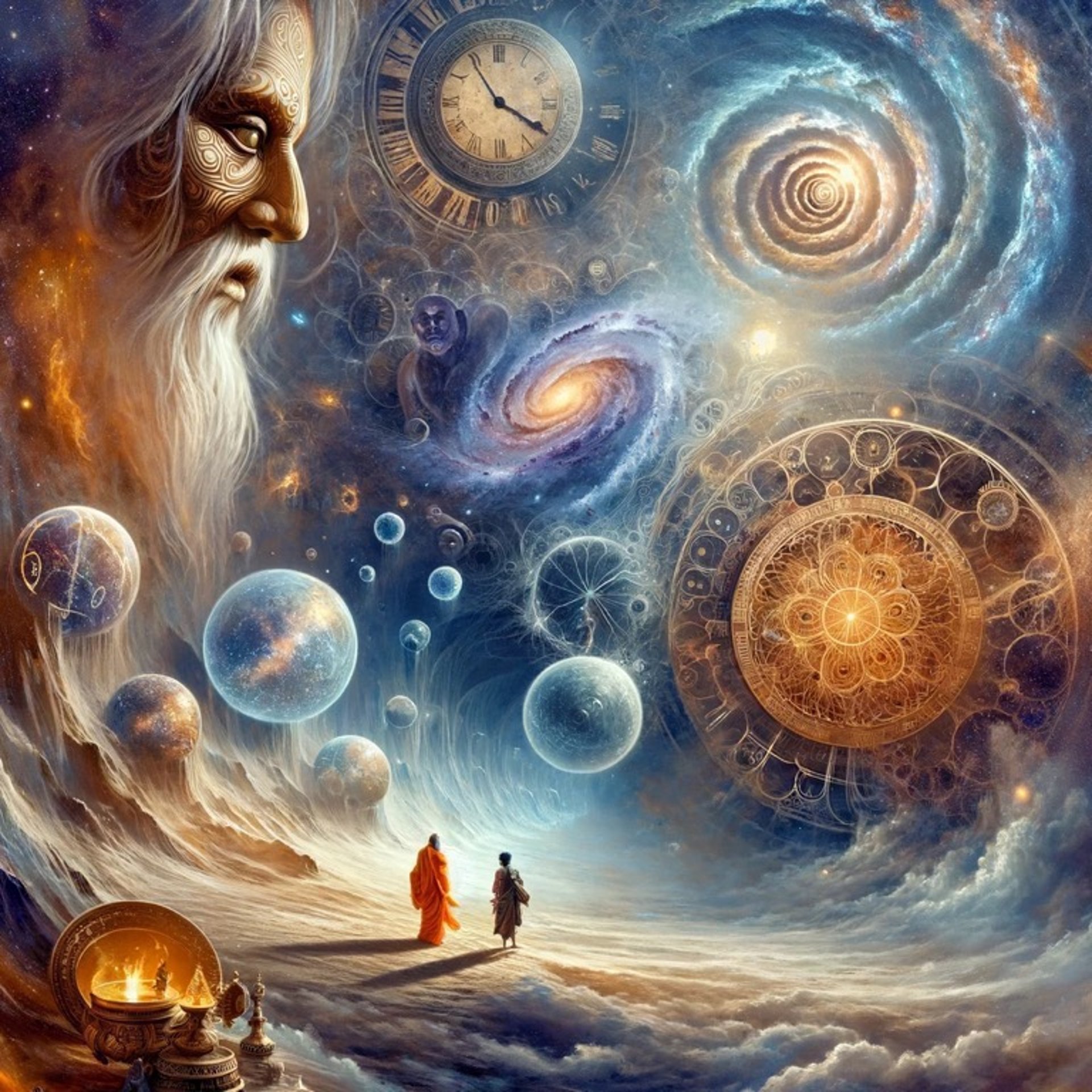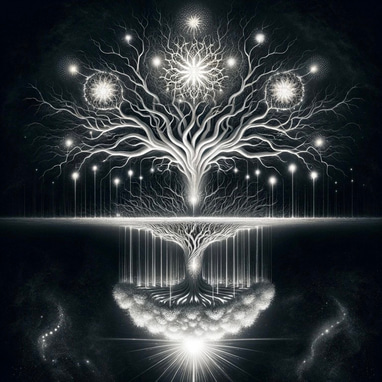
Interweaving Timelessness: The Katha Upanishad, Time Dilation, and the Multiverse
Interweaving Timelessness” explores the profound connections between the ancient philosophical insights of the Katha Upanishad and modern scientific concepts like time dilation and the multiverse. It delves into how Nachiketa’s timeless quest for knowledge mirrors contemporary explorations of reality, blending the realms of spiritual wisdom and cutting-edge physics to illuminate the human pursuit of understanding the cosmos and our place within it. This article offers a unique perspective on the convergence of Eastern philosophy and Western science, revealing the universal quest for deeper truths beyond the boundaries of time and space.
2/6/20242 min read
The Katha Upanishad, an ancient Indian scripture, weaves a narrative that not only explores profound spiritual truths but also, when viewed through the lens of modern physics, resonates with concepts such as time dilation, Einstein’s theory of relativity, and the multiverse. The story of Nachiketa, a young boy who confronts Yama, the god of death, to seek knowledge beyond the mortal realm, offers a timeless exploration of existence, death, and the nature of reality. This narrative, rich in metaphysical inquiry, provides an intriguing parallel to contemporary scientific theories, offering a unique perspective on time, consciousness, and the cosmos.
The Katha Upanishad and the Quest for Eternal Knowledge
In the Katha Upanishad, Nachiketa’s journey begins with a test of his integrity and evolves into a profound dialogue on the nature of the self, life after death, and the path to enlightenment. Yama, impressed by Nachiketa’s sincerity and depth of inquiry, offers him knowledge of the highest order. This ancient narrative delves into concepts of time, existence, and the eternal soul (Atman), suggesting that beyond the transient world lies an immutable, timeless reality.
Time Dilation and Nachiketa’s Journey
The story of Nachiketa’s return to Earth, where many generations have passed in what seemed to him a short time, mirrors the concept of time dilation in Einstein’s theory of relativity. According to relativity, time passes at different rates for observers in different frames of reference, particularly those moving at significant fractions of the speed of light or in strong gravitational fields. Nachiketa’s experience reflects this relativistic effect, where his sojourn in the realm of Yama, a domain beyond ordinary physical constraints, results in a temporal discrepancy upon his return.
The Multiverse and the Realm of Yama
The multiverse theory, which posits the existence of multiple universes with varying physical laws and constants, offers a cosmological framework that can be metaphorically linked to Nachiketa’s visit to Yama’s abode. This realm, beyond the ordinary perception of space and time, can be seen as a different “universe” within a vast multiverse, where different rules of time and existence apply. Nachiketa’s ability to traverse these realms and return with profound knowledge parallels the concept of navigating through different universes, each with its unique temporal flow.
Einstein’s Relativity and the Spiritual Quest
Einstein’s theory of relativity revolutionized the understanding of time and space, highlighting their relative and interconnected nature. This scientific paradigm finds a spiritual counterpart in the Katha Upanishad’s teachings, which emphasize the transcendence of time and the realization of the self as beyond physical existence. The dialogue between Nachiketa and Yama encapsulates a quest for understanding that transcends the limitations of the physical world, akin to the pursuit of knowledge in relativity and quantum mechanics that seeks to uncover the deeper structure of the universe.
Conclusion: A Confluence of Ideas
The narrative of Nachiketa and Yama in the Katha Upanishad, when juxtaposed with the concepts of time dilation, the multiverse, and Einstein’s theory of relativity, reveals a fascinating confluence of ancient wisdom and modern science. This synthesis underscores the perennial human quest to understand the nature of reality, the mystery of existence, and the continuum of time and space. The ancient text, with its deep philosophical inquiries, and modern physics, with its groundbreaking discoveries, together invite us to explore the profound connections between the spiritual and the scientific, between the timeless wisdom of the sages and the exploratory rigor of contemporary physicists. In this exploration, we find that the quest for knowledge, whether through spiritual insight or scientific inquiry, leads to a deeper appreciation of the cosmos and our place within it, bridging the worlds of metaphysics and physics in a continuous journey of discovery.




